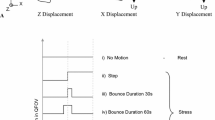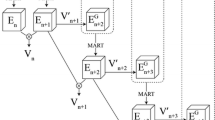Abstract
Low motion phases for cardiac computed tomography reconstructions are currently detected manually in a user-dependent selection process which is often time consuming and suboptimal. The concept of motion maps was recently introduced to achieve automatic phase selection. This pilot study compared the accuracy of motion-map phase selection to that with manual iterative selection. The study included 20 patients, consisting of one group with low and one with high heart rate. The technique automatically derives a motion strength function between multiple low-resolution reconstructions through the cardiac cycle, with periods of lowest difference between neighboring phases indicating minimal cardiac motion. A high level of agreement was found for phase selection achieved with the motion map approach compared with the manual iterative selection process. The motion maps allowed automated quiescent phase detection of the cardiac cycle in 85% of cases, with best results at low heart rates and for the left coronary artery. They can also provide additional information such as the presence of breathing artifacts. Motion maps show promise as a rapid off-line tool to automatically detect quiescent cardiac phases in a variety of patients.




Similar content being viewed by others
References
Heuschmid M, Kuttner A, Flohr T et al (2002) Visualization of coronary arteries in CT as assessed by a new 16 slice technology and reduced gantry rotation time: first experiences. Rofo Fortschr Geb Rontgenstrahlen Neuen Bildgeb Verfahr 174:721–724
Kopp AF, Kuttner A, Heuschmid M, Schroder S, Ohnesorge B, Claussen CD (2002) Multidetector-row CT cardiac imaging with 4 and 16 slices for coronary CTA and imaging of atherosclerotic plaques. Eur Radiol 12(Suppl 2):S17–S24
Nieman K, Cademartiri F, Lemos PA, Raaijmakers R, Pattynama PM, de Feyter PJ (2002) Reliable noninvasive coronary angiography with fast submillimeter multislice spiral computed tomography. Circulation 106:2051–2054
Rumberger JA (2002) Noninvasive coronary angiography using computed tomography: ready to kick it up another notch? Circulation 106:2036–2038
Hoffmann MHK, Shi H, Schmid FT, Gelman H, Brambs H-J, Aschoff AJ (2004) Noninvasive coronary imaging with MDCT in comparison to invasive conventional coronary angiography: a fast-developing technology. AJR Am J Roentgenol 182:601–608
Hoffmann MHK, Shi H, Lieberknecht M, Aschoff AJ, Haerer W, Brambs H-J (2003) Sixteen-slice computed tomography and magnetic resonance imaging of calcified pericardium. Circulation 108:48e–49e
Shi H, Aschoff AJ, Brambs HJ, Hoffmann MH (2004) Multislice CT imaging of anomalous coronary arteries. Eur Radiol 14:2172–2181
van Ooijen PM, Dorgelo J, Zijlstra F, Oudkerk M (2004) Detection, visualization and evaluation of anomalous coronary anatomy on 16-slice multidetector-row CT. Eur Radiol 14:2163–2171
Hamoir XL, Flohr T, Hamoir V et al (2005) Coronary arteries: assessment of image quality and optimal reconstruction window in retrospective ECG-gated multislice CT at 375-ms gantry rotation time. Eur Radiol 15:296–304
Hong C, Becker CR, Huber A et al (2001) ECG-gated reconstructed multi-detector row CT coronary angiography: effect of varying trigger delay on image quality. Radiology 220:712–717
Nieman K, Rensing BJ, van Geuns RJ et al (2002) Non-invasive coronary angiography with multislice spiral computed tomography: impact of heart rate. Heart 88:470–474
Herzog C, Abolmaali N, Balzer JO et al (2002) Heart-rate-adapted image reconstruction in multidetector-row cardiac CT: influence of physiological and technical prerequisite on image quality. Eur Radiol 12:2670–2678
Achenbach S, Ropers D, Holle J, Muschiol G, Daniel WG, Moshage W (2000) In-plane coronary arterial motion velocity: measurement with electron-beam CT. Radiology 216:457–463
Wang Y, Vidan E, Bergman GW (1999) Cardiac motion of coronary arteries: variability in the rest period and implications for coronary MR angiography. Radiology 213:751–758
Manzke R, Koehler T, Nielsen T, Hawkes D, Grass M (2004) Automatic phase determination for retrospectively gated cardiac CT. Med Phys 31:3345–3362
Manzke R, Grass M, Köhler T, Hawkes D (2004) Automatic phase point determination for cardiac CT imaging. SPIE Proc 5370:690–700
Grass M, Manzke R, Nielsen T et al (2003) Helical cardiac cone beam reconstruction using retrospective ECG gating. Phys Med Biol 48:3069–3084
Manzke R, Grass M, Nielsen T, Shechter G, Hawkes D (2003) Adaptive temporal resolution optimization in helical cardiac cone beam CT reconstruction. Med Phys 30:3072–3080
Shechter G, Naveh G, Altman A, Proksa R, Grass M (2003) Cardiac image reconstruction on a 16-slice CT scanner using a retrospectively ECG-gated, multi-cycle 3D back-projection algorithm. SPIE Proc 5032:1820–1828
Hoffmann MHK, Shi H, Manzke R et al (2005) Noninvasive coronary angiography with 16-detector row CT: effect of heart rate. Radiology 234:86–97
Bland J, Altman D (1995) Comparing methods of measurement: why plotting difference against standard method is misleading. Lancet 346:1085–1087
Manzke R, Grass M, Hawkes D (2004) Artifact analysis and reconstruction improvement in helical cardiac cone beam CT. IEEE Trans Med Imag 23:1150–1164
Kundel HL, Polansky M (2003) Measurement of observer agreement. Radiology 228:303–308
Applegate KE, Tello R, Ying J (2003) Hypothesis testing III: counts and medians. Radiology 228:603–608
Zou KH, Tuncali K, Silverman SG (2003) Correlation and simple linear regression. Radiology 227:617–628
Kopp A, Schroeder S, Kuettner A et al (2002) Non-invasive coronary angiography with high resolution multidetector-row computed tomography. Results in 102 patients. Eur Heart J 23:1714–1725
Cattin P, Dave H, Grunenfelder J, Szekely G, Turina M, Zund G (2004) Trajectory of coronary motion and its significance in robotic motion cancellation. Eur J Cardiothorac Surg 25:786–790
Saranathan M, Ho V, Hood M, Foo T, Hardy C (2001) Adaptive vessel tracking: automated computation of vessel trajectories for improved efficiency in 2D coronary MR angiography. J Magn Reson Imaging 14:368–373
Vembar M, Garcia MJ, Heuscher DJ et al (2003) A dynamic approach to identifying desired physiological phases for cardiac imaging using multislice spiral CT. Med Phys 30:1683–1693
Author information
Authors and Affiliations
Corresponding author
Additional information
The presented method allows the accurate semiautomatic detection of minimal motion phases of the heart. It may therefore be used as a semiautomatic guidance tool to detect phase settings for high-resolution reconstructions after cardiac multiple detector-row computed tomography.
Rights and permissions
About this article
Cite this article
Hoffmann, M.H.K., Lessick, J., Manzke, R. et al. Automatic determination of minimal cardiac motion phases for computed tomography imaging: initial experience. Eur Radiol 16, 365–373 (2006). https://doi.org/10.1007/s00330-005-2849-z
Received:
Revised:
Accepted:
Published:
Issue Date:
DOI: https://doi.org/10.1007/s00330-005-2849-z




